*NURSING > TEST BANK > Test Bank Advanced Practice Nursing in the Care of Older Adults 2nd edition Kennedy-Malone Test Bank (All)
Test Bank Advanced Practice Nursing in the Care of Older Adults 2nd edition Kennedy-Malone Test Bank | Advanced Practice Nursing in the Care of Older Adults / Edition 2 TESTBANK_Kennedy-Malone TestBank NR601. All questions and ANSWERS (2020)
Document Content and Description Below
Chapter 1. Changes With Aging Multiple Choice Identify the choice that best completes the statement or answers the question. 1. The major impact of the physiological changes that occur with ag... ing is: A. Reduced physiological reserve B. Reduced homeostatic mechanisms C. Impaired immunological response D. All of the above 2. The strongest evidence regarding normal physiological aging is available through: A. Randomized controlled clinical trials B. Cross-sectional studies C. Longitudinal studies D. Case control studies 3. All of the following statements are true about laboratory values in older adults except: A. Reference ranges are preferable B. Abnormal findings are often due to physiological aging C.Normal ranges may not be applicable for older adults D. Reference values are not necessarily acceptable values 4. Biochemical individuality is best described as: A. Each individual’s variation is often much greater than that of a larger group B. The unique biochemical profile of a selected population C. The truly “normal” individual—falling within average range D. Each individual’s variation is often much smaller than that of a larger group 5. Polypharmacy is best described as taking: A. More than nine medications per day B. More than five medications per day C. Even a single medication if there is not a clear indication for its use D. When a drug is given to treat the side effect of another drug 6. Pharmacokinetic changes with aging is reflective of: A. What the drug does to the body B. What the body does to the drug C. The effect at the site of action and the time and intensity of the drug D. The side effects commonly associated with the drug 7. All the following statements are false about drug absorption except: A. Antacids increase the bioavailability of digitalis B. Gastric acidity decreases with age C. Anticholinergics increase colonic motility D. Underlying chronic disease has little impact on drug absorption 8. All of the following statements are true about drug distribution in the elderly except: A. Drugs distributed in water have lower concentration B. Drugs distributed in fat have less intense, more prolonged effect C. Drugs highly protein bound have greater potential to cause an adverse drug reaction D. The fastest way to deliver a drug to the action site is by inhalation 9. Men have faster and more efficient biotransformation of drugs and this is thought to be due to: A. Less obesity rates than women B. Prostate enlargement C. Testosterone D. Less estrogen than women 10. The cytochrome p system involves enzymes that are generally: A. Inhibited by drugs B. Induced by drugs C. Inhibited or induced by drugs D. Associated with decreased liver perfusion 11. A statement not shown to be true about pharmacodynamics changes with aging is: A. Decreased sensitivity to oral anticoagulants B. Enhanced sensitivity to central nervous system drugs C. Drug responsiveness can be influenced by patient activity level D. There is a decreased sensitivity to beta blockers 12. Atypical presentation of disease in the elderly is reflected by all the following except: A. Infection without fever B. Depression without dysphoric mood C. Myocardial infarction with chest pain and diaphoresis D. Cardiac manifestations of thyroid disease 13. Functional abilities are best assessed by: A. Self-report of function B. Observed assessment of function C. A comprehensive head-to-toe examination D. Family report of function Chapter 2. Health Promotion Multiple Choice Identify the choice that best completes the statement or answers the question. 1. The leading cause of death in elderly travelers worldwide is: A. Cardiovascular disease B. Infections C. Accidents D. Malaria 2. Which of the following should be avoided in countries where food and water precautions are to be observed? A. Hot coffee B. Bottled water C. Salad buffet D. Unpeeled bananas 3. What insect precautions are not necessary to prevent insect-borne diseases in the tropics? A. Using 100% DEET on skin to prevent bites B. Treating clothes with permetherin C. Covering up exposed skin to lessen biting surface D. Taking malaria pills as directed for areas at risk for malaria 4. An example of secondary prevention you could recommend/order for older adults would be to: A. Check for fecal occult blood B. Wear seat belts in the car C. Provide foot care for a diabetic patient D. Administer a tetanus shot 5. Ali is a 72-year-old man who recently came to the U.S. from Nigeria. He reports having BCG (bacille Calmette-Guerin) vaccination as a child. Which of the following is correct regarding a tuberculin skin test? A. It should not be done at all. B. It should be read as smaller than it really is. C. Vaccination history is irrelevant; read as usual. D. It should be read as larger than it really is. 6. A 72-year-old woman and her husband are on a cross-country driving vacation. After a long day of driving, they stop for dinner. Midway through the meal, the woman becomes very short of breath, with chest pain and a feeling of panic. Which of the following problems is most likely? A. Pulmonary edema B. Heart failure C. Pulmonary embolism D. Pneumonia 7. Ivan W. is a 65-year-old man who is new to your practice. He has a history of COPD, CAD, hypertension, and type 2 diabetes mellitus. He has had no immunizations since his discharge from the military at age 25. Childhood diseases included chickenpox, measles, mumps, and “German measles.” He presents for a disease management visit. Which of the following immunizations would you recommend for Ivan? A. MMR, influenza, pneumococcal, Zostavax B. Influenza, pneumococcal, PPD, Hepatitis B C. Tdap, pneumococcal, influenza, Zostavax D. Hepatitis B, influenza, pneumococcal, Hepatitis A 8. Leo L. is a 62-year-old African American male who comes for an initial visit to your practice. Personal health history includes smoking 1 pack/day since age 11, consuming a case of beer (24 bottles) every weekend, and working as an assembler (sedentary job) for the past 10 years. Family history in first-degree relatives includes hypertension, high cholesterol, heart attack, and type 2 diabetes mellitus. Leo’s BMI is 32; BP today is 130/86. You order a fasting glucose, lipid profile, and return visit for BP check. This is an example of: A. Primary prevention B. Secondary prevention C. Tertiary prevention D. Health profiling 9. A local chapter of a nurse practitioner organization has begun planning a community-based screening for hypertension at a local congregate living facility. This population was selected on the basis of: A. A predicted decreased incidence of high blood pressure in this population B. A recognized element of high risk within this group C. Readily available treatment measures D. Achieving an administrative goal for the congregate living facility 10. Performing range of motion exercises on a client who has had a stroke is an example of which level of prevention? A. Primary prevention B. Tertiary prevention C. Secondary prevention D. Rehabilitation prevention 11. The nurse practitioner demonstrates an understanding of primary prevention of falling among the elderly through which management plan? A. Evaluate a need for assistive devices for ambulation after the client has been injured from a fall. B. Provide resources to correct hazards contributing to falls in the home environment. C. Reinforce the need to use prescribed eyeglasses to prevent further injury from falls. D. Provide information about medications, side effects, and interactions. 12. An example of an active strategy of health promotion for an individual to accomplish would be: A. Maintaining clean water in the local environment B. Introducing fluoride into the water C. Beginning a stress management program D. Maintaining a sanitary sewage system 13. You are working with an older male adult with a long history of alcohol abuse and a 30-year history of smoking. In recommending an intervention for this client, your responsibility is to: A. Make the individual abandon his own health practices and follow your recommendations B. 5 tuberculin units intradermal PPD injection and if negative repeat with same dose one week later C. Chest x-ray at the same time of PPD testing D. 5 tuberculin units intradermal PPD injection and if positive repeat same dose in one week 14. The four main domains of clinical preventive services that the practitioner will provide are: A. Counseling interventions, screening tests, immunizations, and chemoprophylaxis B. Counseling intervention, screening tests, immunizations, and education C. Counseling interventions, transportation, screening tests, and immunizations D. Screening tests, brief psychotherapy, immunizations, and chemoprophylaxis 15. Which organism that can be prevented by immunization is most often responsible for an infectious “outbreak” in the nursing home setting? A. Haemophilus influenza B. Streptococcus C. Influenza A D. Mycobacterium tuberculosis 16. What is the appropriate method for tuberculosis screening of an older adult entering a nursing home? A. 5 tuberculin units intramuscular PPD injection and if negative repeat with same dose one week later B. 5 tuberculin units intradermal PPD injection and if negative repeat with same dose one week later C. Chest x-ray at the same time of PPD testing D. 5 tuberculin units intradermal PPD injection and if positive repeat same dose in one week Chapter 3. Exercise in Older Adults Multiple Choice Identify the choice that best completes the statement or answers the question. 1. Exercise recommended for older adults should include activities that: A. Conserve energy B. Restrict flexibility C. Strengthen muscles D. Are anaerobic in nature 2. Preferred amount of exercise for older adults is: A. 10 minutes of physical activity each morning B. 30 minutes per day of aerobic activity five times a week C. Any increase in physical activity over a sedentary lifestyle D. 60 minutes per day that includes 30 minutes of aerobic activity and 30 minutes of weight training five times a week 3. Which of the following medical conditions is not considered restrictive for engaging in physical activity? A. Unstable angina B. Dehydration C. Depression D. Uncontrolled tachycardia Chapter 19. Palliative Care and End-of-Life Care Multiple Choice Identify the choice that best completes the statement or answers the question. 1. Hospice care differs from palliative care in that: A. It is not covered by insurance B. Supports patients and families through both the dying and the bereavement process C. It cannot be provided in the nursing home D. The majority of those admitted to hospice die within 7 days 2. Evidence reflects the primary obstacle to implementing palliative care in the long-term care setting include all of the following except: A. Inadequate communication between decision makers B. Failure to recognize futile treatments C. Lack of advance directives D. Lack of sufficient staff 3. The most prevalent symptom in end-of-life care includes all of the following except: A. Lower extremity weakness B. Pain C. Dyspnea D. Delirium 4. Pain at the end of life is most often due to all of the following except: A. Musculoskeletal disorders B. Headache C. Cancer pain D. Neuropathic pain 5. The strongest level of evidence reflects the absolute contraindication for NSAID use exists with: A. Chronic kidney disease B. Peptic ulcer disease C. Heart disease D. Liver disease 6. The drug specific for severe opioid-induced constipation is: A. Lactulose B. Ducolax C. Mineral oil D. Methylnaltrexone 7. Pharmacological interventions for dyspnea include all of the following except: A. Antitussives B. Inhaled anesthetics C. Sedatives D. Anxiolytics 8. Delirium is typically characterized by all of the following except: A. Inattention B. Hyperactive level of psychomotor activity C. Disorganized thinking D. Altered level of consciousness 9. The first step in treating delirium is to: A. Give low-dose Haldol if the patient has psychosis B. Identify the cause C. Provide reality orientation D. Use side rails and/or wrist restraints to keep the patient safe 10. The majority of patients enrolled in hospice care die: A. In a nursing home B. In the hospital C. In an inpatient hospice facility D. At home 11. A drug that can be used to treat two very common symptoms in a dying patient (pain and dyspnea) is: A. Morphine B. Methadone C. Gabapentin D. Lorazepam 12. The tasks of grieving include all of the following except: A. Acknowledge the reality of death B. Work through the pain of grief C. Begin to disengage D. Restructure relationships 13. The best description of complicated grief is: A. Chronic, delayed, exaggerated, masked, or disenfranchised B. Experience of shock during notification of the death C. When grief is actually experienced before the death of a loved one D. A physical illness develops soon after death of a loved one 14. All of the following statements are true about interventions in working with the bereaved except: A. Allow the active expression of grief B. There is strong evidence behind recommended interventions C. Staff attending memorial services support the family D. Provide both emotional and spiritual support 15. The highest level of evidence to support interventions at the end of life is with: A. Opioids for pain control B. Hyocsyamine for respiratory secretions C. Stimulant laxatives for treating constipation D. Opioids for dyspnea 16. The highest level of evidence with the use of adjuvant analgesics is with: A. Tricyclic antidepressants avoided due to high adverse events B. Therapeutic trials before discontinuing drugs C. Patient with fibromyalgia are candidates for adjuvant analgesics D. Neuropathic pain patients are candidates for adjuvant analgesia [Show More]
Last updated: 1 year ago
Preview 1 out of 67 pages
Instant download
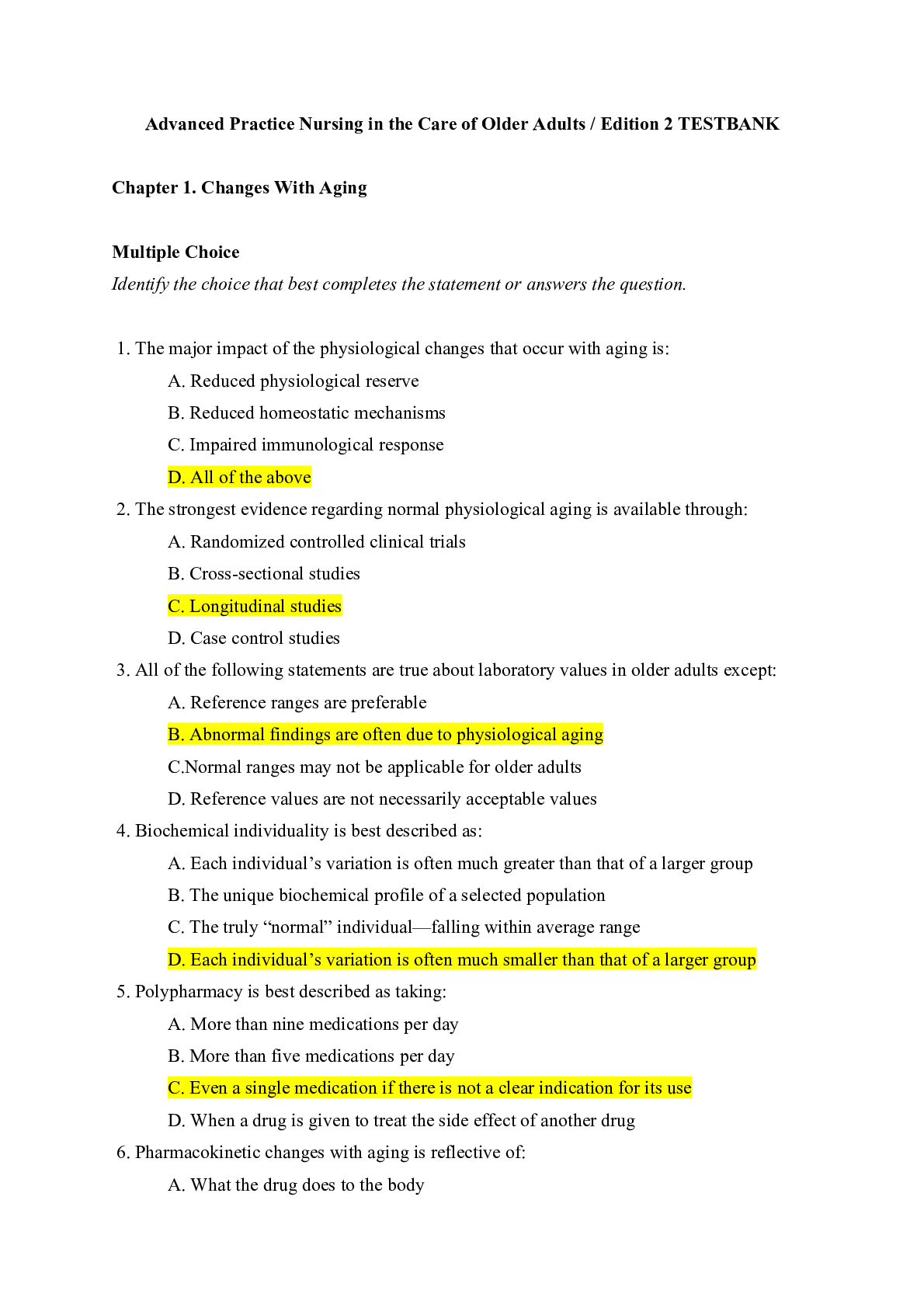
Buy this document to get the full access instantly
Instant Download Access after purchase
Add to cartInstant download
Reviews( 0 )
Document information
Connected school, study & course
About the document
Uploaded On
Jun 10, 2021
Number of pages
67
Written in
Additional information
This document has been written for:
Uploaded
Jun 10, 2021
Downloads
0
Views
49


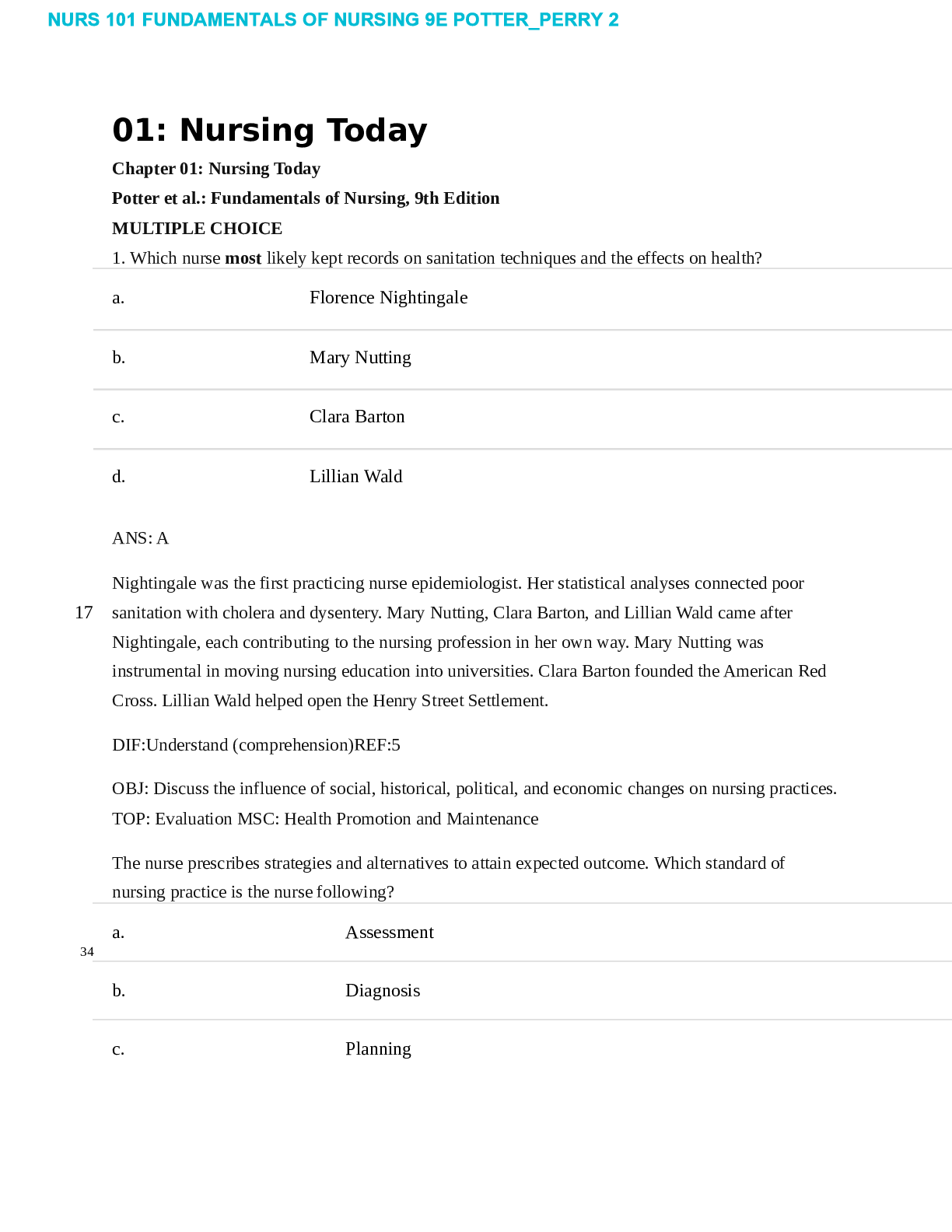
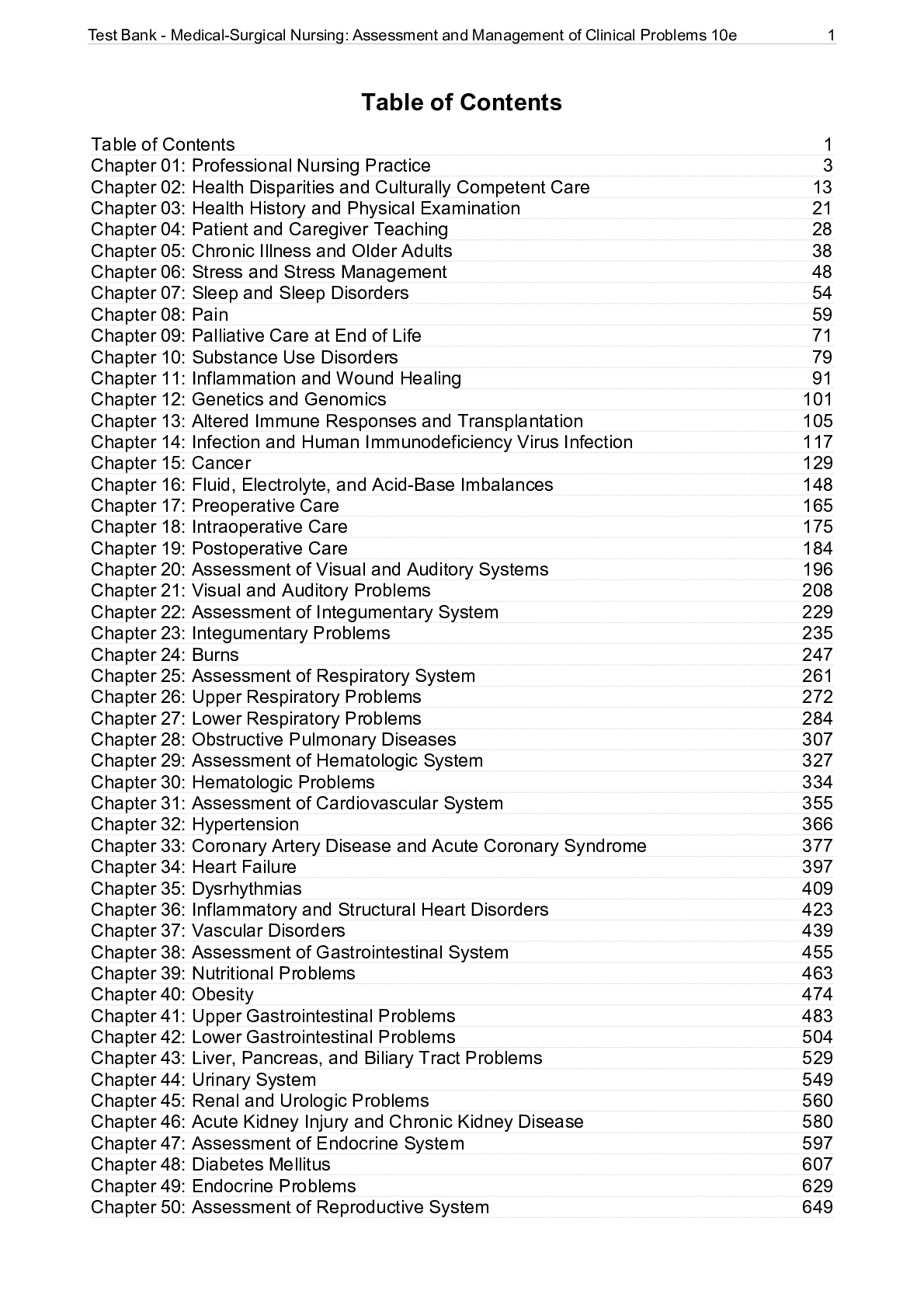
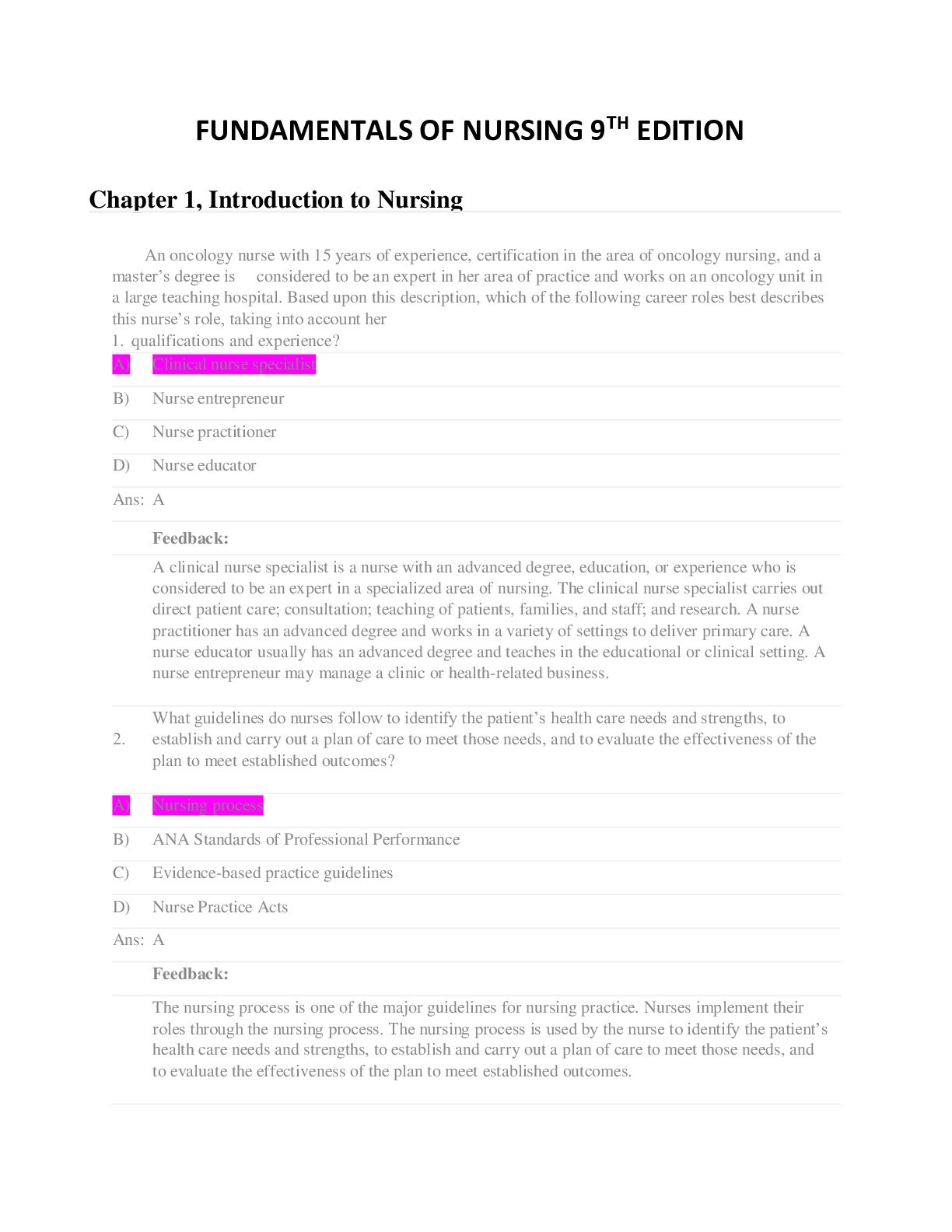
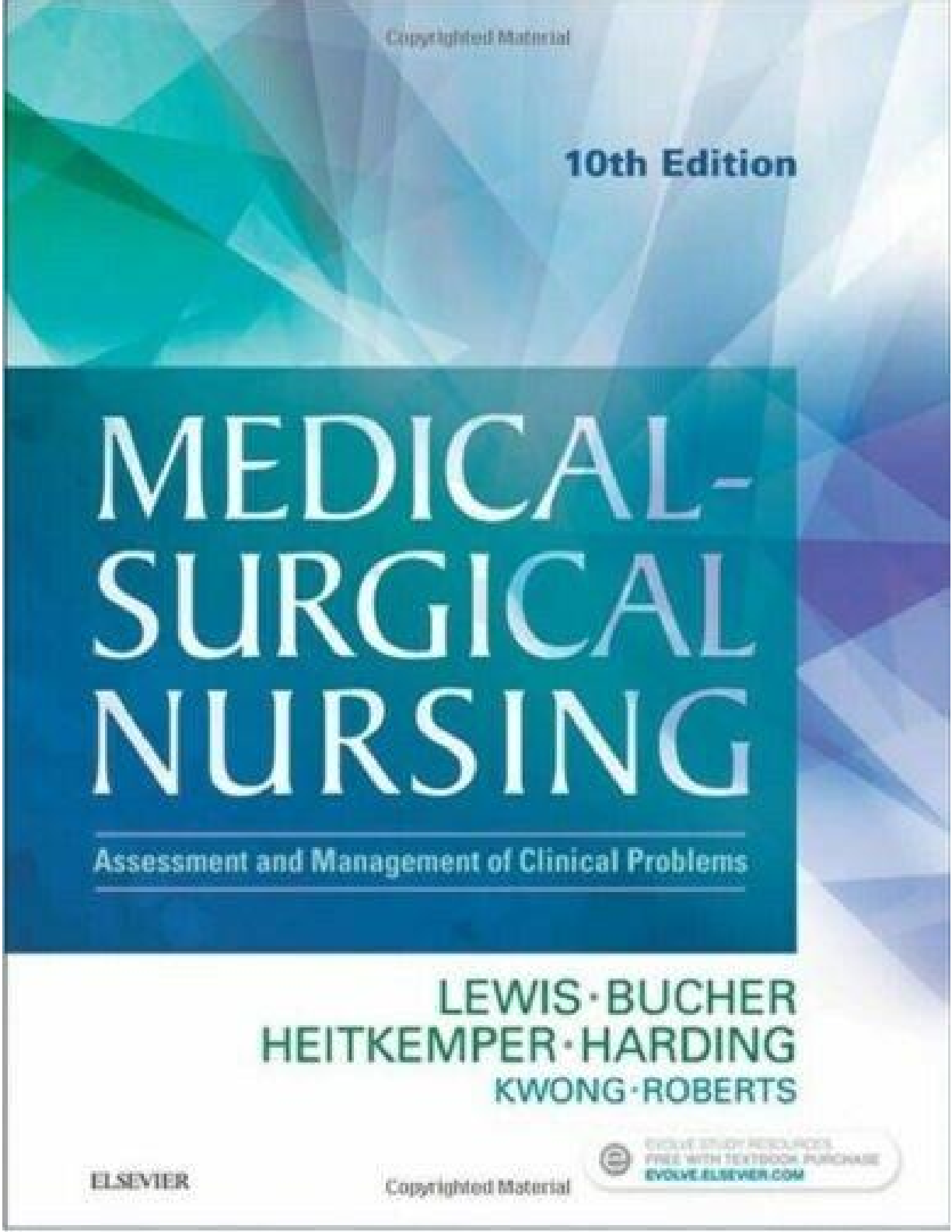
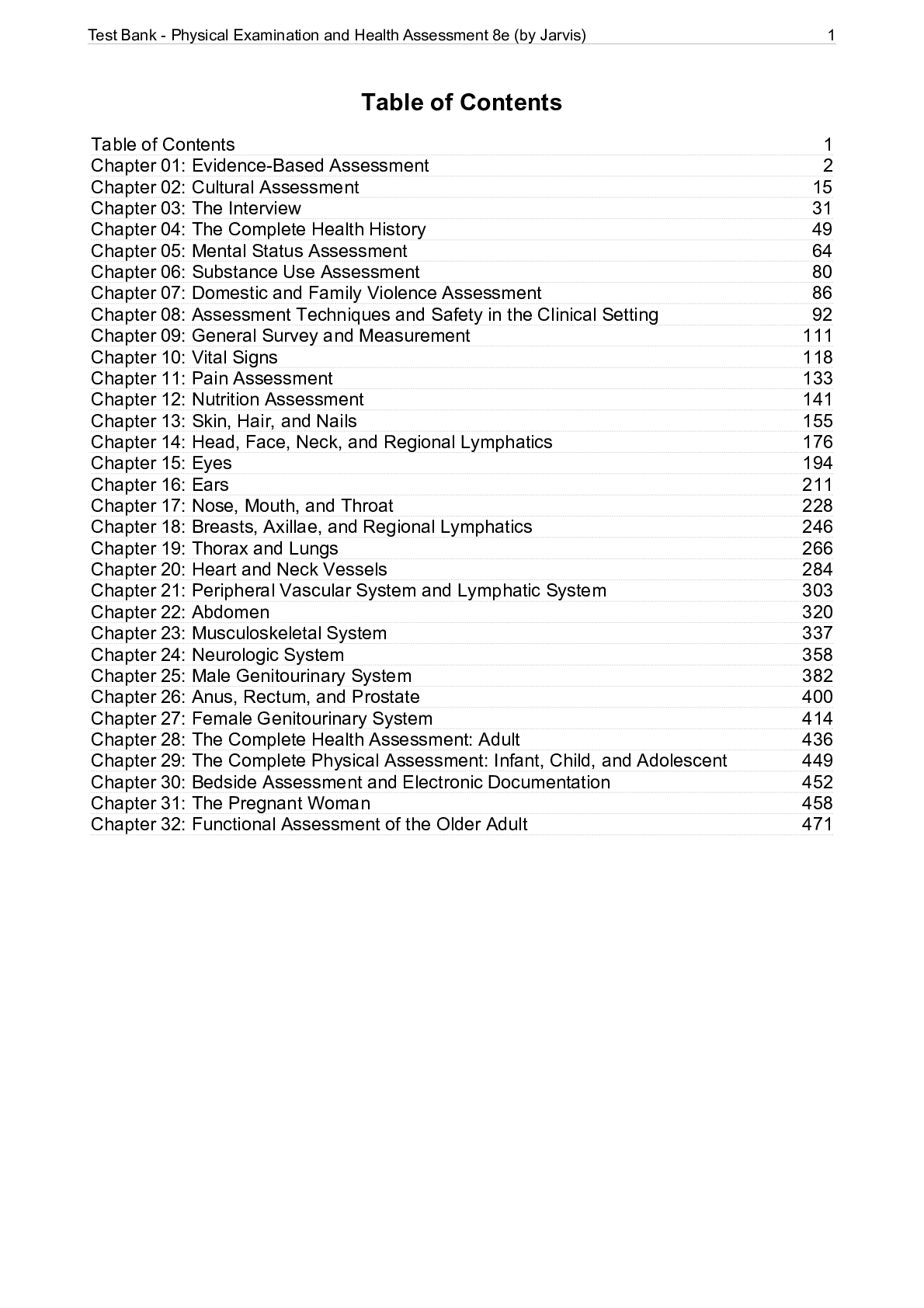
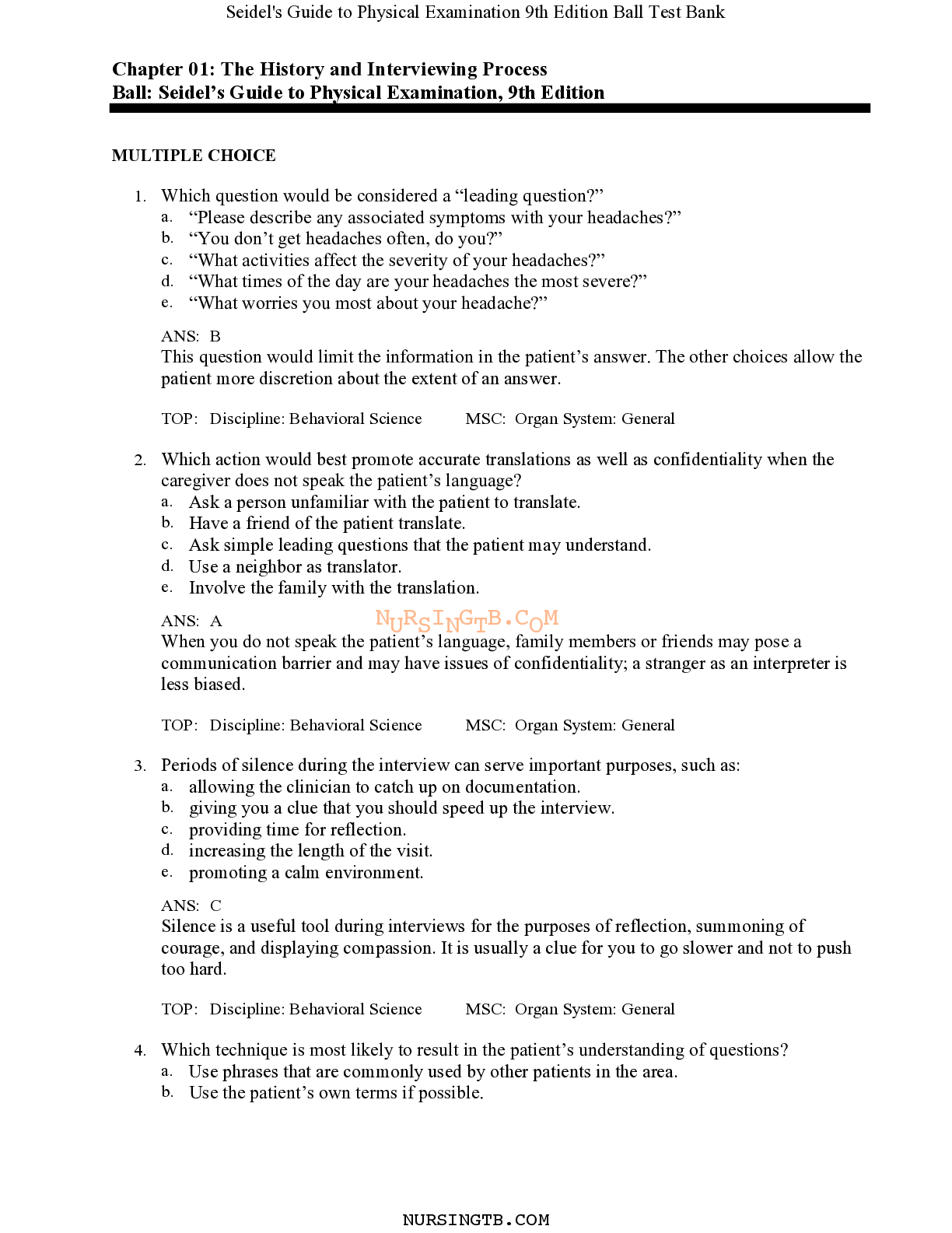

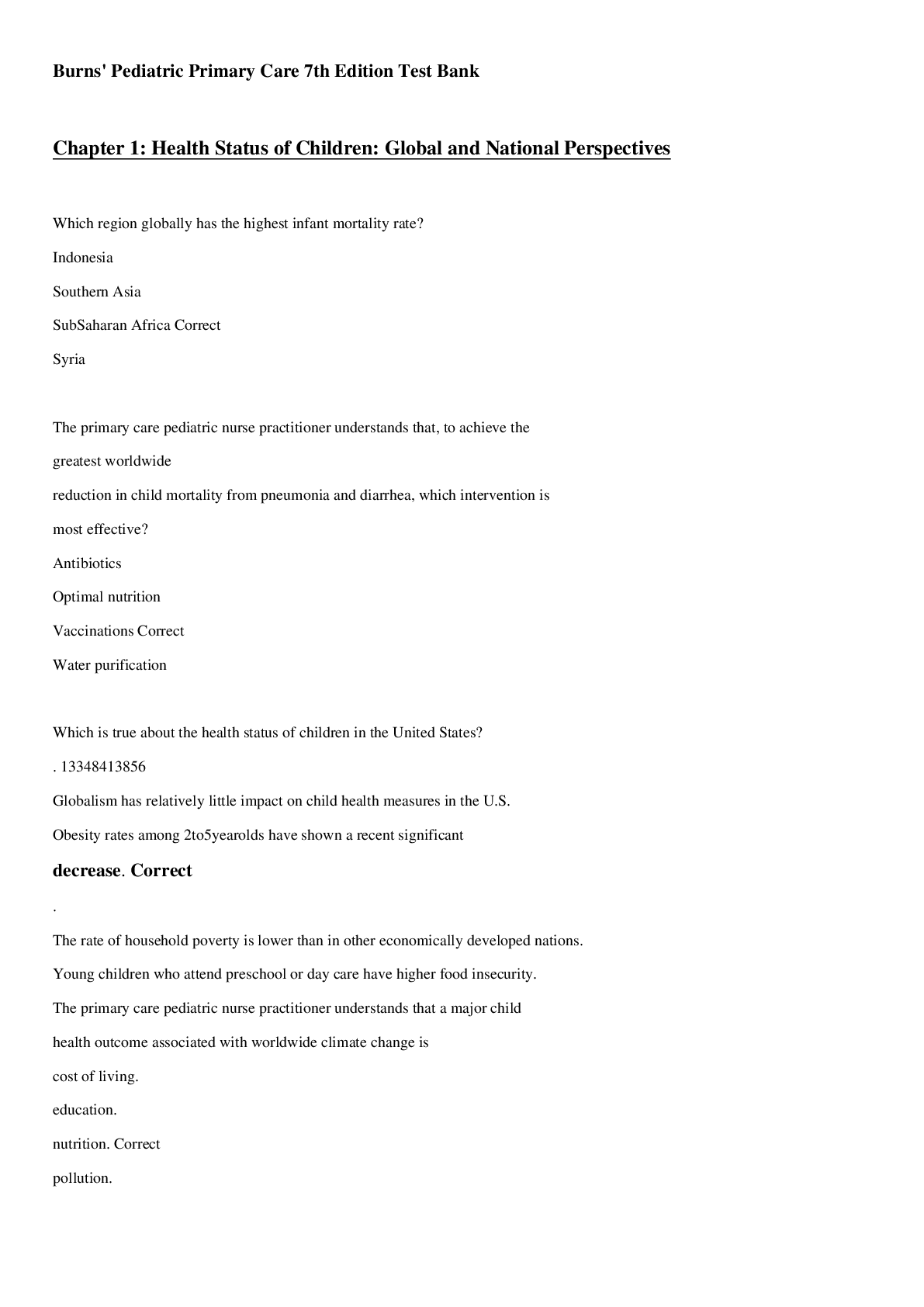
.png)
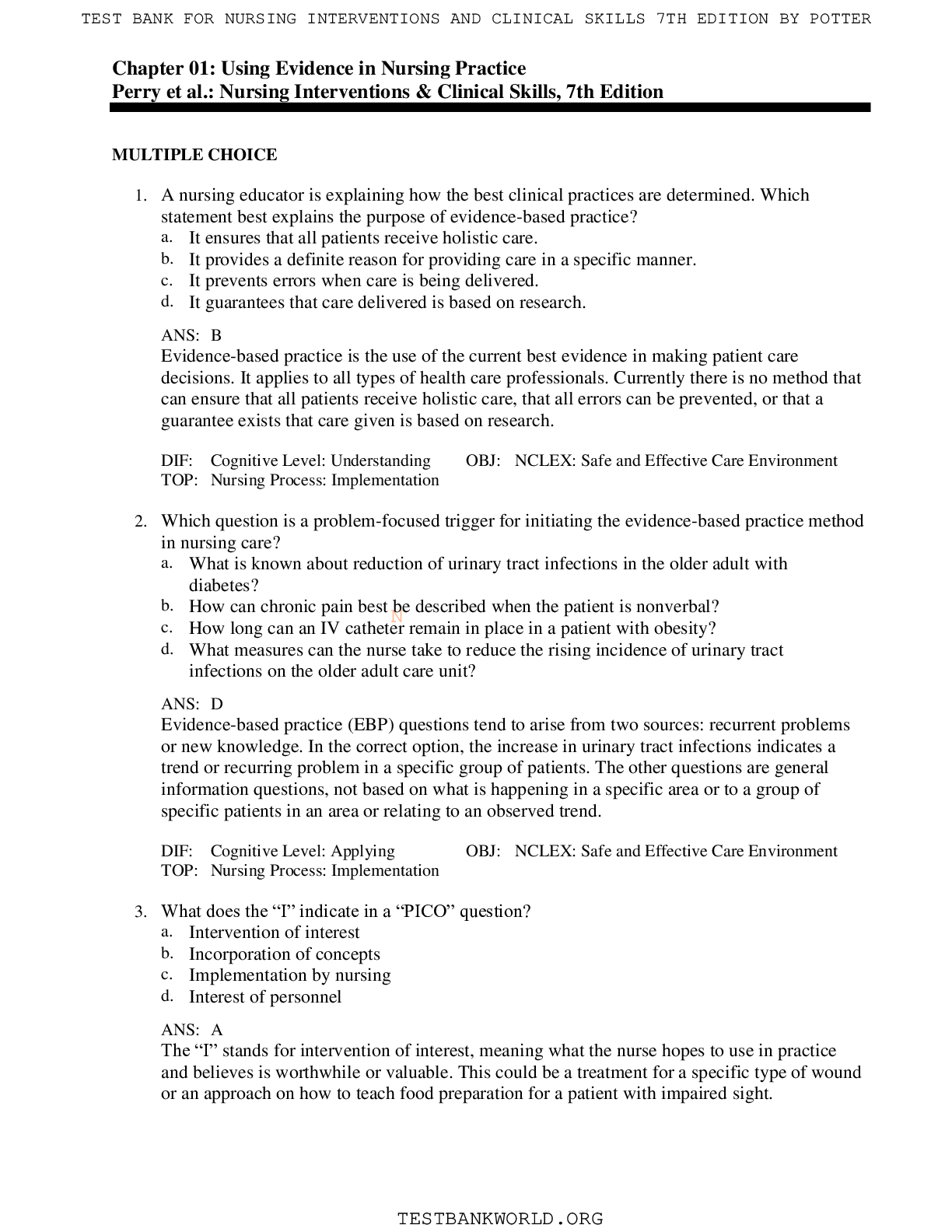
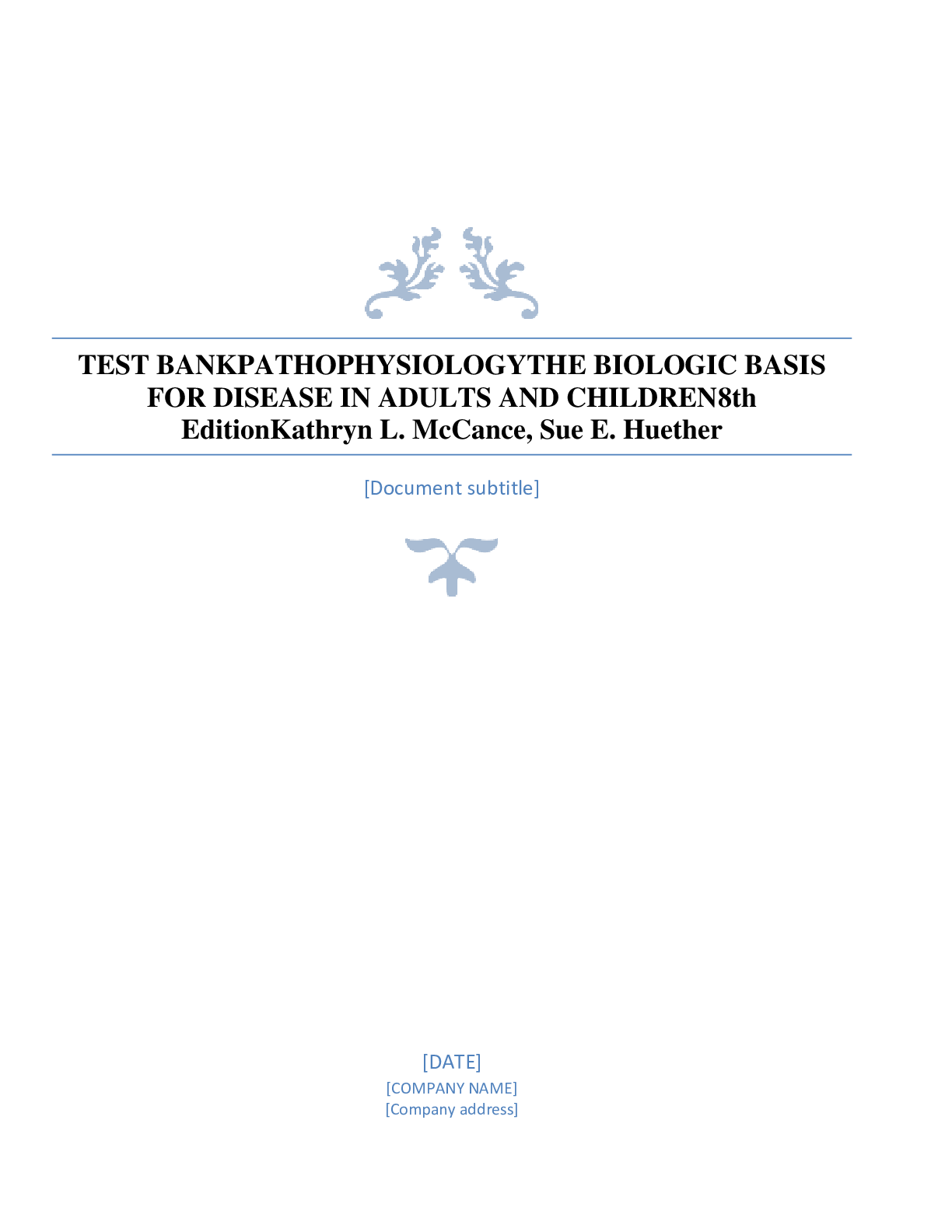

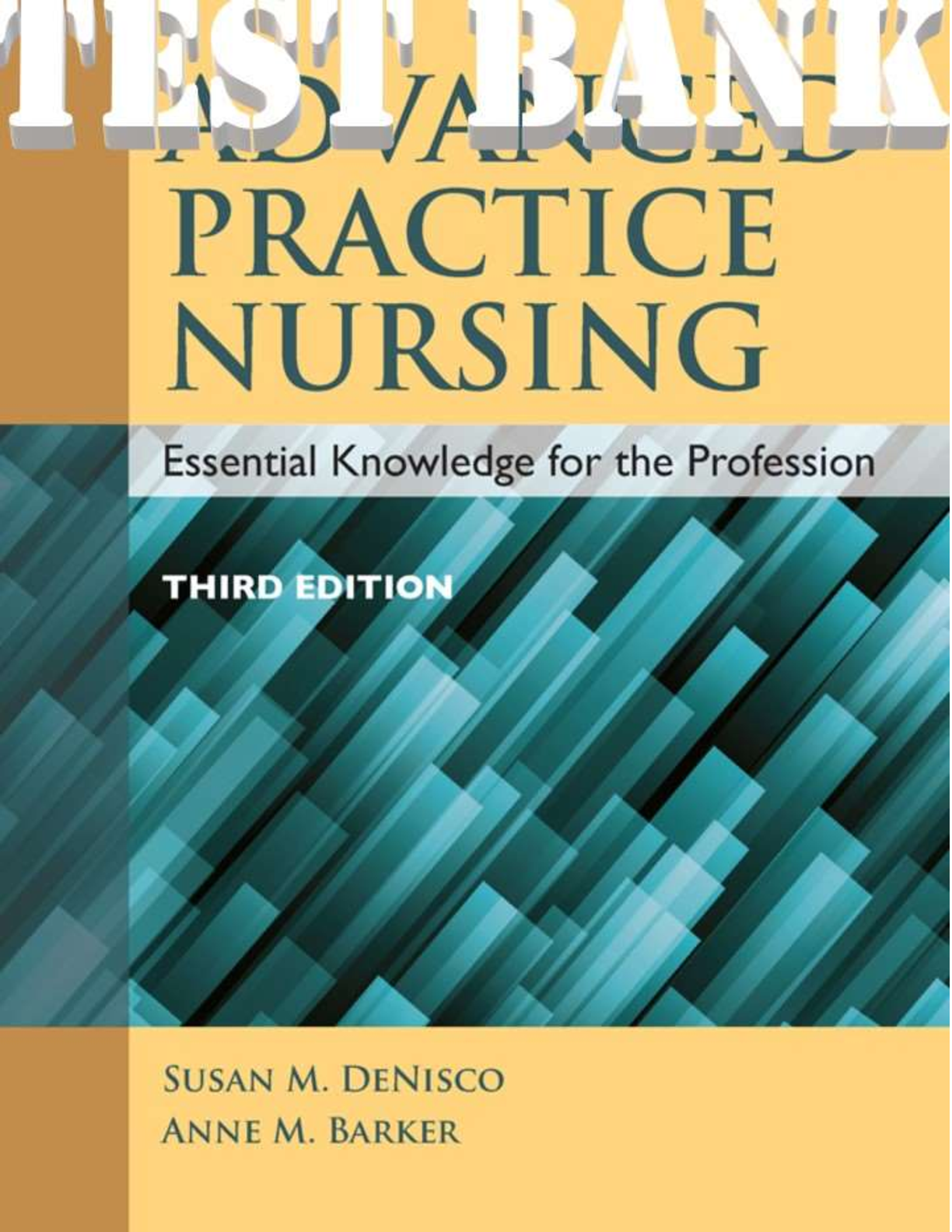
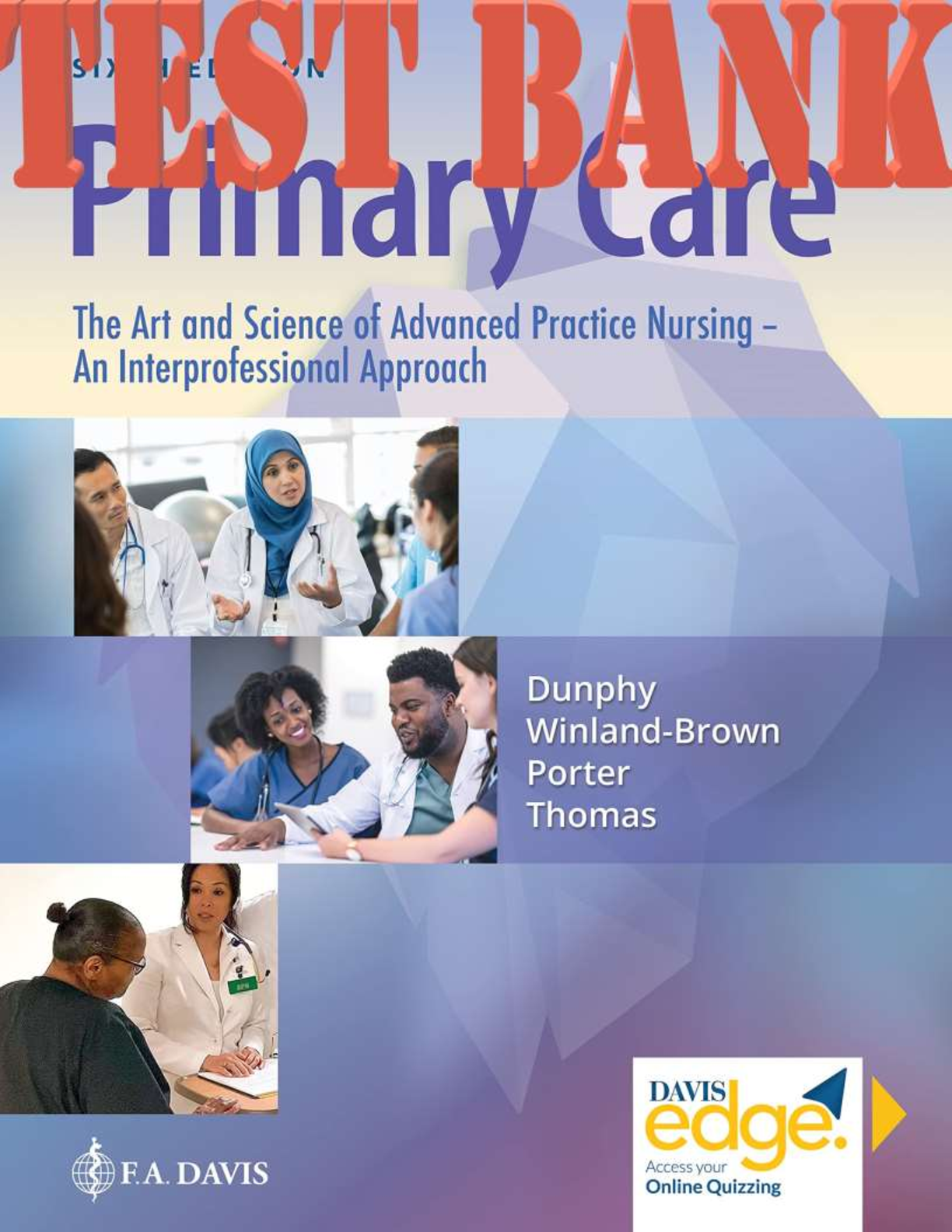

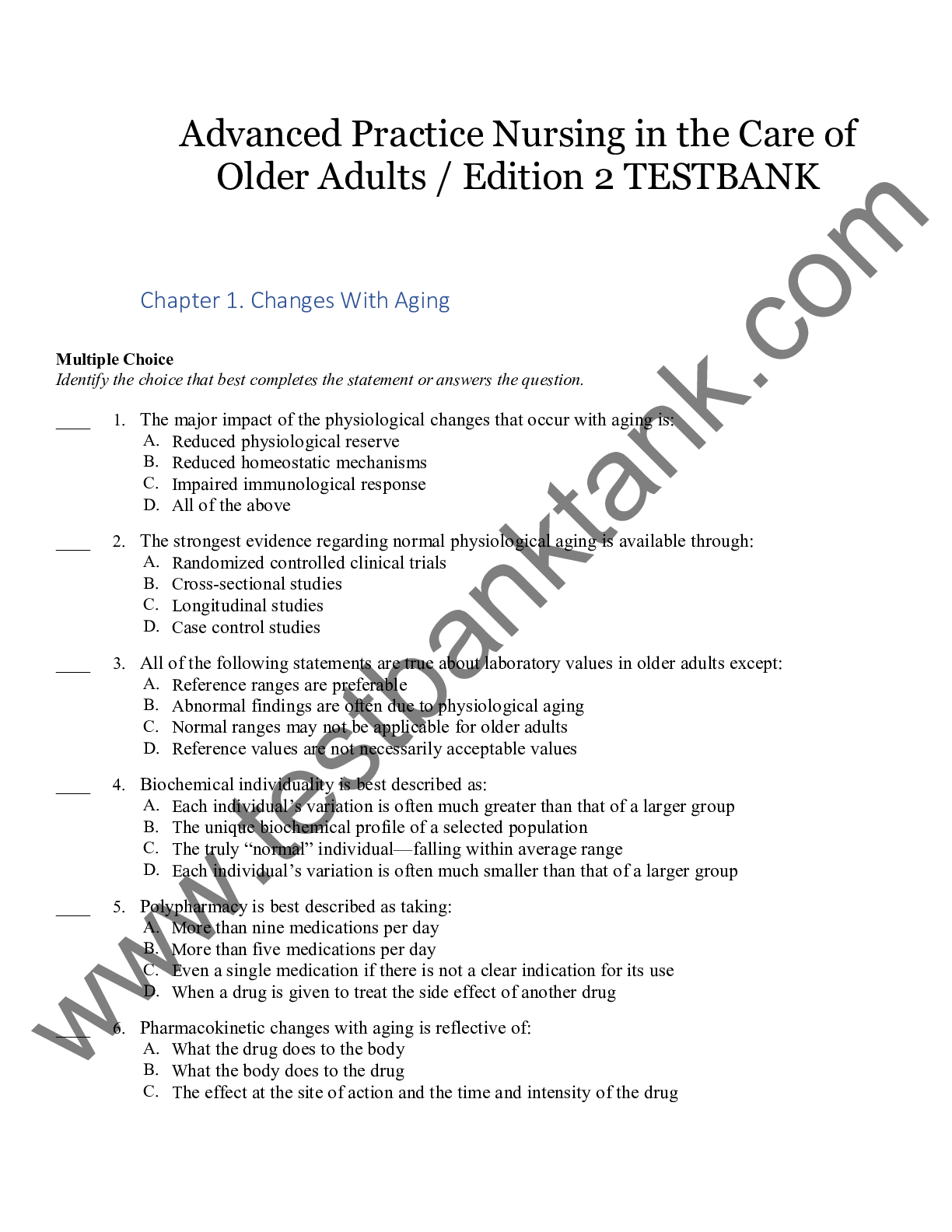



 2021.png)

